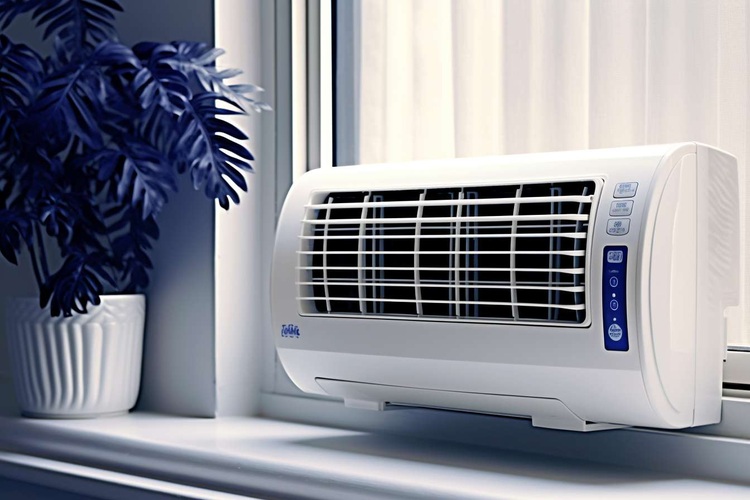The Silent Comfort: Understanding Air Conditioning for Your Home or Apartment
Air conditioning has become an essential part of modern living, providing a cool haven from sweltering temperatures and humid conditions. Whether you're looking to upgrade your home's cooling system or searching for the right air conditioner for your apartment, understanding the basics of air conditioning can help you make an informed decision. Let's explore the world of air conditioning and how it can transform your indoor environment.

What types of air conditioners are available for homes and apartments?
Choosing the right air conditioner depends on your specific needs and living situation. For homes, central air conditioning systems are popular, distributing cool air throughout the entire house via ductwork. These systems are efficient for cooling large spaces but require professional installation. Split systems, with an outdoor compressor unit and one or more indoor air handlers, offer a ductless alternative that’s becoming increasingly popular for both homes and apartments.
For apartment dwellers, window units and portable air conditioners are common choices. Window units are installed in a window frame and are effective for cooling single rooms. Portable air conditioners can be moved from room to room but require a way to vent hot air outside, typically through a window or sliding door.
How can I maximize the efficiency of my air conditioning system?
Efficiency is key to keeping your cooling costs down and reducing your environmental impact. Regular maintenance is crucial—clean or replace filters monthly during peak usage periods. Keep the area around your outdoor unit clear of debris and vegetation to ensure proper airflow. Using a programmable thermostat can help you adjust temperatures based on your daily schedule, saving energy when you’re away or asleep.
Proper insulation and sealing in your home or apartment can significantly improve your air conditioner’s efficiency. Check for drafts around windows and doors, and consider using thermal curtains to block out heat during the hottest parts of the day. Additionally, using ceiling fans in conjunction with your air conditioning can help distribute cool air more effectively, allowing you to set your thermostat a few degrees higher without sacrificing comfort.
What features should I look for in a modern air conditioner?
Today’s air conditioners come with a range of features designed to enhance comfort, efficiency, and convenience. Look for units with variable-speed compressors, which can adjust their output to match cooling needs more precisely, leading to better temperature control and energy savings. Smart features like Wi-Fi connectivity allow you to control your air conditioner remotely via smartphone apps, adjust settings, and even receive maintenance alerts.
Energy efficiency ratings are crucial when selecting an air conditioner. The Seasonal Energy Efficiency Ratio (SEER) indicates how efficiently a unit operates over an entire cooling season—the higher the SEER rating, the more energy-efficient the unit. For window units and portable air conditioners, look for the Energy Star label, which indicates that the product meets strict energy efficiency guidelines set by the U.S. Environmental Protection Agency and the Department of Energy.
How does proper sizing affect air conditioning performance?
Choosing the right size air conditioner for your space is critical for optimal performance and efficiency. An undersized unit will struggle to cool your area effectively, running constantly and driving up energy costs. Conversely, an oversized unit will cool the space too quickly, shutting off before properly dehumidifying the air, which can lead to a clammy feeling and potential mold growth.
To determine the proper size, calculate the square footage of the area you want to cool and consider factors such as ceiling height, insulation quality, and the number of windows. Professional HVAC contractors can perform a load calculation to recommend the most appropriate size for your specific needs. For apartments or single rooms, a general rule of thumb is to aim for about 20 BTUs of cooling power per square foot of living space.
What are the latest innovations in air conditioning technology?
The air conditioning industry continues to evolve, with new technologies emerging to improve efficiency and reduce environmental impact. Inverter technology allows compressors to run at variable speeds, adjusting output based on demand rather than simply turning on and off. This results in more consistent temperatures and reduced energy consumption.
Manufacturers are also exploring alternative refrigerants with lower global warming potential, responding to environmental concerns about traditional refrigerants. Some cutting-edge systems are integrating with smart home ecosystems, learning occupants’ preferences and adjusting settings automatically for optimal comfort and efficiency.
As we look to the future, the focus on sustainability in air conditioning technology is likely to intensify. From solar-powered units to geothermal cooling systems, innovative solutions are being developed to keep our indoor spaces comfortable while minimizing energy use and environmental impact.
In conclusion, air conditioning plays a vital role in creating comfortable living environments, especially in areas prone to high temperatures and humidity. By understanding the basics of how air conditioners work, the types available, and the features to look for, you can make an informed decision when choosing a cooling solution for your home or apartment. Remember that proper sizing, regular maintenance, and energy-efficient practices are key to enjoying optimal performance and comfort from your air conditioning system.






